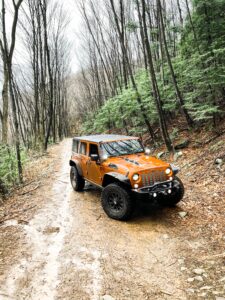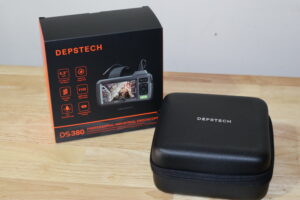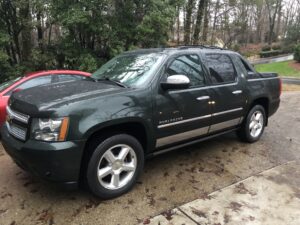History of the Toyota Land Cruiser: The Early Years
Over 40 years the Toyota Land Cruiser evolved from Japanese Jeep to the iconic off road adventure vehicle we know and love today.
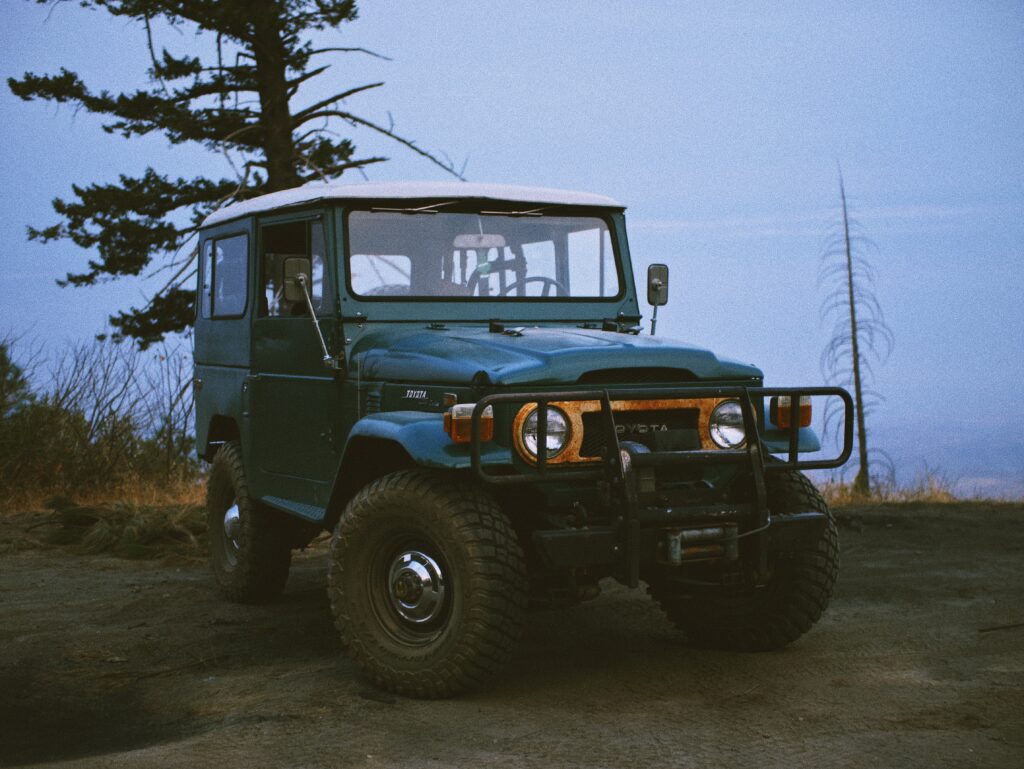
40 Series Land Cruiser. Photo Credit: Jay Miller
Most SUV and off-road enthusiasts are familiar with the modern Toyota Land Cruiser. In fact, it’s hard not to be as the styling of Toyota’s iconic SUV hasn’t changed much in the last 40 years. Toyota found its modern design language for the Land Cruiser in the 80 series, a generation that launched in 1990 as a 1991 model year. Since then, through the 100 series and 200 series that followed, updates were of course made but the design language stayed much the same. The Land Cruiser has looked like a Land Cruiser for so long, you’d be excused for forgetting or perhaps not even realizing there were nearly 40 years of Land Cruisers before the 80 series. In this article, we’ll take a look at those classic machines from the past and get you Up 2 Speed on the early history of the mighty Toyota Land Cruiser.
The Land Cruiser is Born
Most of the classic off-roaders were born of military need and the Land Cruiser was no different. Having witnessed the utility of the Willy’s Jeep on the battlefield in World War II, the Japanese police forces wanted a similar vehicle for their own use following the war. The brewing conflict on the Korean peninsula that would eventually become the Korean War put some urgency around the production of a light duty military vehicle, and Toyota was called to action. Toyota very much patterned their vehicle after the Willys Jeep and even initially called it a Toyota Jeep. After complaints from Willys for hijacking their vehicle name, Toyota renamed their creation the Land Cruiser and the legend was born.
Like the Willys Jeep, the Toyota Land Cruiser found a place in the consumer marketplace following its wartime usage, making its debut in the U.S. market in 1958. Like a Jeep, it was a no-frills affair designed to get people off of paved roads and back again. This original Toyota Land Cruiser was internally known as the 20 series. According to Toyota, only one Land Cruiser was sold in the U.S. in 1958, so it didn’t exactly get off to a roaring start!
The First Iconic Land Cruiser
Two years later, in 1960, Toyota introduced the 40 series. While the 40 series still looked more like a Jeep than a modern Land Cruiser, it represented the first truly iconic Land Cruiser design. The 40 series was sold in every nook and cranny of the word and quickly became one of the international adventure vehicles of choice. And if you ever wondered where Ford found the design inspiration for the front end of the Bronco, look no further. The 40 series, with several updates, stayed on sale in the U.S. for next 24 years, finally ending its run in 1984.
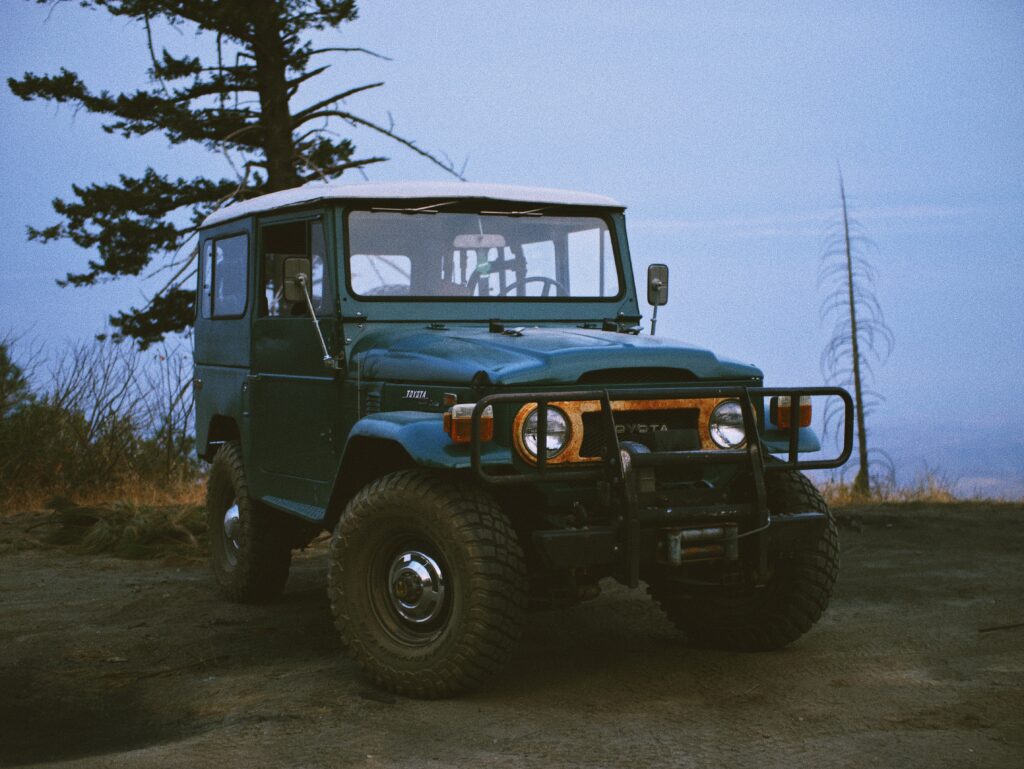
From 1967-1979, Toyota sold alongside the 40 series a 55 series Land Cruiser. The marketing idea was to build a Land Cruiser that was less rugged than the 40 series and would appeal to families. To get there, Toyota basically stretched the 40 series and made it into more of a station wagon. While the 55 isn’t quite the modern Land Cruiser, it is the first early hint at the final shape the Land Cruiser would take in the 80 series a decade or so later.
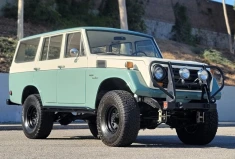
Becoming the Modern Land Cruiser
In 1980, the 55 series was replaced with the 60 series in all of its 80’s SUV glory. Square headlights. Square body. Square everything. In the 80’s, it really was hip to be square. And importantly to our story, the 60 series showed Toyota’s commitment to the tall station wagon design language that would ultimately differentiate it from Jeep.
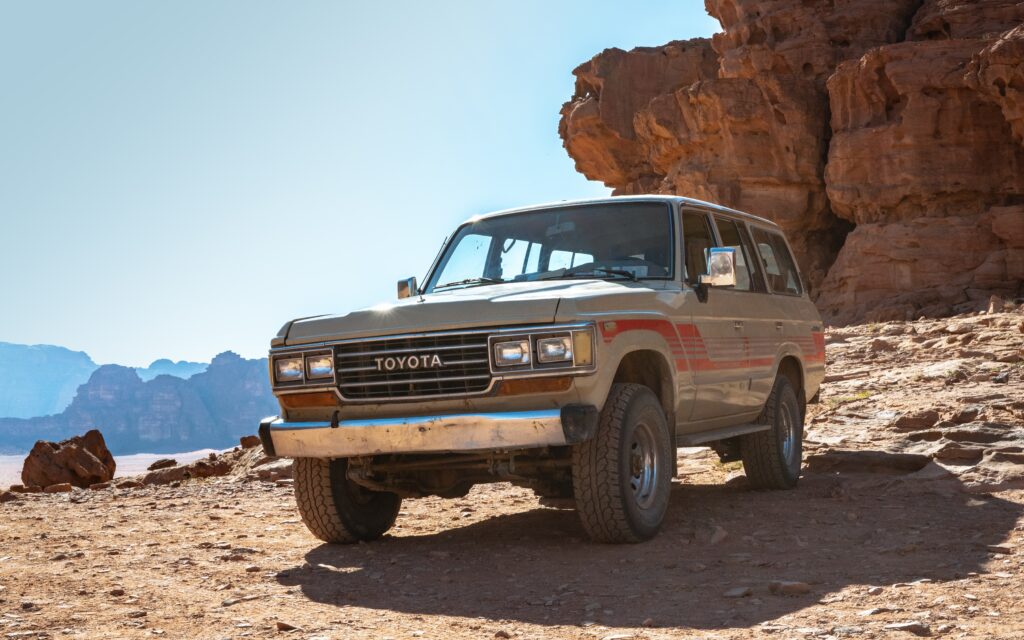
In the later ‘80s, the Land Cruiser family tree got more complicated. For two decades it was the hardcore 40 series and whatever iteration Toyota was on of the slightly nicer and more family friendly version of the Land Cruiser. But then came the most interesting of the Land Cruiser platforms, the 70 series.
The Swiss Army Knife of Land Cruisers: The 70 Series
Disappointingly for Land Cruiser enthusiasts, the 70 series was never sold in the U.S., which is a shame because it is by far the most versatile and useful of all the Land Cruisers. The 70 series essentially has an open architecture rear, giving owners the opportunity to build whatever sort of back end they would find most useful. Think diesel trucks in the U.S. that can be pickups or the bed can be removed and they can be made into tow trucks or campers or whatever. The 70 series actually serves as a work vehicle in many parts of the world with either a truck bed back end or in the famous ‘Troop Carrier’ iteration which essentially makes it a van.
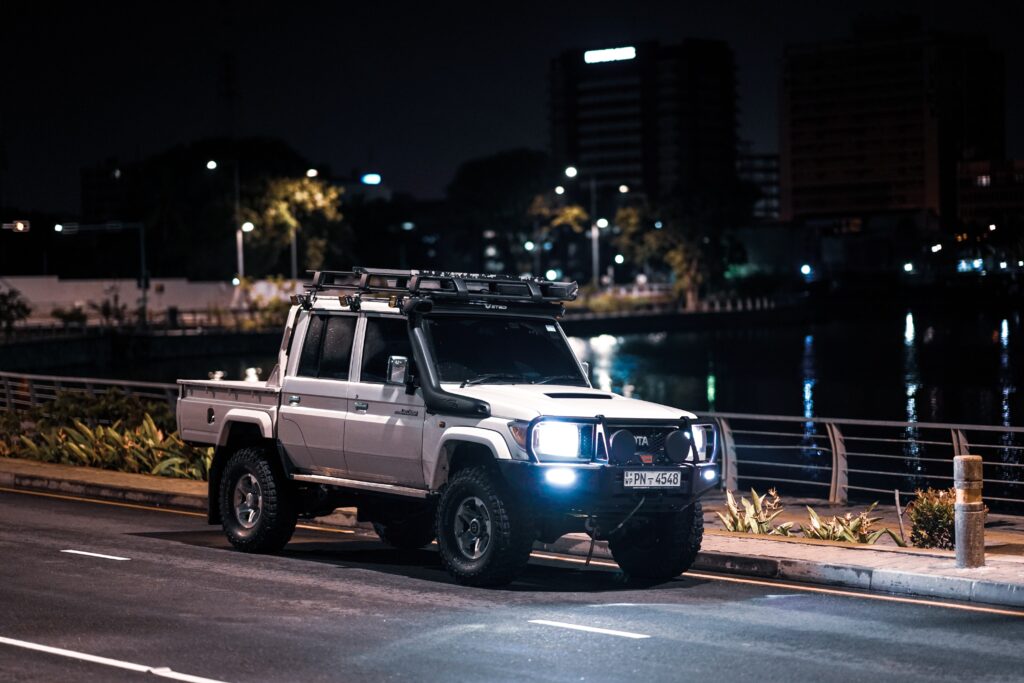
Photo Credit: Vinal Gunasek – Unsplash
While the 70 series never sold in the U.S., it is an important piece of the Land Cruiser’s U.S. story because part of the 70 series family tree is the 90 series. And while the U.S. didn’t get that series either, the 90 series is the first iteration of the Land Cruiser Prado, the smaller sized version of the Land Cruiser that would eventually begat the Lexus GX and Toyota 4Runner (4th Generation), both built on the 120 series platform and full fledged members of the Land Cruiser family tree. Oh, and because every family needs its weird cousin, you can thank the 120 series for the FJ Cruiser too.
The Land Cruiser We Know Today
1990 gave the U.S. the first generation of what most would recognize as the Land Cruiser of today, the 80 series. With full time four wheel drive, a center locking diff, and in later models front and rear lockers and a gutsier 6 cylinder engine, many enthusiasts consider the 80 series of the mid-90s to be the ultimate expression of the Land Cruiser. 1995 brought the first Lexus version of the Land Cruiser, the LX450.
The 80 series was followed by the 100 and 200 series Land Cruisers (and their Lexus variants) and the 120 series was followed by a 150 series that updated the Lexus GX and 4Runner (and killed the FJ Cruiser) but all of that is a story for another day.
The evolution of the Land Cruiser from essentially a Japanese Jeep to something uniquely Toyota and arguably the greatest off-road exploration vehicle in the world is an interesting case study in car design and execution. For decades Toyota maintained two versions of the Land Cruiser before finally realizing that what people really wanted was a merger of the two. The world wanted a vehicle as rugged and capable as a Jeep but as comfortable and practical for long adventures as a Land Rover. And the world wanted that vehicle to be far more reliable and dependable than either of them. It’s in that lane the Land Cruiser has traveled ever since. Jeeps are great toys and Land Rovers are beautiful luxury cars, but when getting there and getting back is what matters most, you take a Land Cruiser.

